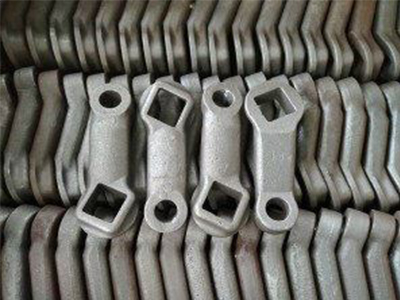- What are the principles of stainless steel precision casting method?
- Comparison between Die Casting and Sand Casting
- The role of heat resistance in cast steel parts
- Introduction to the knowledge of stainless steel castings
- Factors affecting the accuracy of Castings
- There are several main types of cracks in castings
- Characteristics and calculation of gating system for Steel Castings
- Buy cast iron machine tools pay attention to quality
- How to control the temperature of stainless steel precision casting?
- Industrial indicators of quenched castings
- Call : +86 13390692151
- sale@kfqizhongji.com
-
Room 1, No. 21, Chaoying East Road, Zhoushi,
Kunshan City, Jiangsu Province, China
Characteristics and calculation of gating system for Steel Castings
1. Characteristics of cast steel gating system characteristics of cast steel.
Liquid metal is required to be filled quickly and smoothly because of its high melting point, poor fluidity, large shrinkage and easy oxidation.
The gating system has the following characteristics:
1. The shrinkage of cast steel billet is large, and the castings are prone to defects such as shrinkage, porosity, crack, deformation and so on. Thick variable wall thickness castings use the principle of directional solidification to form a gate and riser system, and the liquid almost flows into the mold cavity through the riser to enhance the feeding capacity of the riser; it is used for castings with sheath which are easy to crack and warp. The inner runner should be evenly distributed on the thin wall of the casting and the mechanical hindrance of the runner to the casting should be kept to a minimum.
two。. Cast steel is usually poured with breakout ladle because of its high pouring temperature and easy oxidation. The slag blocking function of ladle pouring is good, and the requirement for slag blocking function of gating system is low, so the cross-sectional area of gating system is large and open, and high slag blocking function is not necessary, but the mold must be filled quickly and smoothly. The pouring pressure of the leaky ladle is high, and the chute is easy to be damaged, so the gating system must be simple, strong and anti-impact. Refractory brick pipes must be used for gates of large and medium-sized castings, as well as gates and inner chutes that consume more than 1 ton of molten steel. The gating system of small steel castings can be water glass, resin sand or full surface sand and provide sufficient strength.
2. Dimension calculation of gating system for steel castings.
1. Calculate the size of subpackage casting. When producing small steel castings in large quantities, subpackage casting is often used. Generally, a closed or semi-closed gating system is used to enhance the slag retaining capacity. The cross-sectional ratio of gating system is: Σ A: Σ A horizontal: a straight = 1: (0.8-0.9): (1.1-1.2).
2. Using the size of leaky ladle casting to calculate that leaky ladle pouring is different from subladle pouring, the amount of liquid metal outflow during leaky ladle pouring basically depends on the diameter of the bottom hole. On the other hand, the gating system bears the molten steel falling from the bottom of the ladle, and the gating system itself does not control the flow rate. In the actual production, the gating system of steel castings is determined according to the diameter of the injection hole at the bottom of the leaky ladle, the diameter and velocity of the injection hole at the bottom of the ladle are found out, and the number of injection holes is considered at the same time, and the pouring time is calculated according to the formula (1Mel 11).
T=G/NnV ladle; formula: t-pouring time (s); total weight of molten steel in G-cavity (kg); n-number of holes per ladle (kg/s); V ladle-molten steel pouring speed (kg/s); N-simultaneous pouring ladle number (unit). 1Mel 11 the average value of different cladding hole diameter and molten steel pouring speed d/mm 30 35 40 45 50 55 60 70 80 100 pouring speed V=kg/s 10 20 27 42 55 72 90 120 150 195 whether the pouring time calculated can be checked by the rising speed V of molten steel in the mold cavity, see formula 12). V=h/t; formula: v-mold liquid level rising speed (mm/s); pouring position of h-casting (mm) (when calculating the rising speed of molten steel in inclined casting, its height h should be the casting height plus 1 / 2 of the inclined height); t-pouring time (s); when the calculated rising speed V is less than the value of Table 1 / 2, large size cladding holes can be selected or the number of cladding holes can be increased. It can also be tilted when conditions permit, and its tilt height depends on the size of the sandbox, but the maximum inclination must not exceed 300mm.
The minimum allowable rising speed of molten steel in the mold cavity / t casting structure < 5 > 5: 15 > 15: 35 > 35: 65 > 65: 100, the cross-sectional area is calculated, and the total cross-sectional area of each gate is determined according to proportion. The ratio is as follows: hole A: Σ A: Σ A: straight = 1: (1.8: 2.0): (1.8: 2.0): (2.0 ~ 2.5) the total cross-sectional area of each gate is calculated, and the cross-sectional area, geometric shape and geometric size of each gate are determined according to the shape, structural size and production conditions of the casting.





